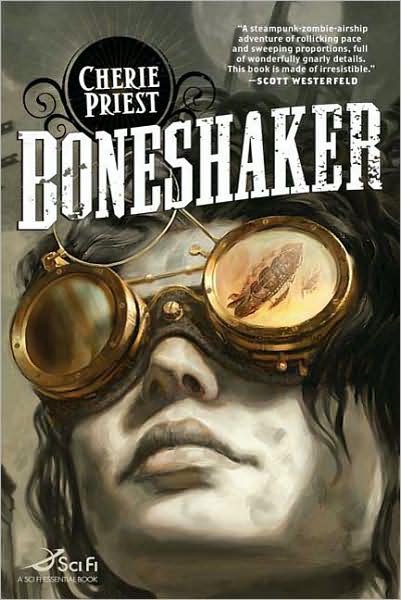Sometimes the real world is just a bit too much to take. Be it bullies, school, work, mortgage payments, or just your run-of-the-mill boredom, most of us could use an escape for an hour or two a week. And if that escape happened to involve strapping on a suit of chain mail armor, gripping a double-edged broadsword and laying into a tribe of angry orcs, then all the better. This was the world of Dungeons & Dragons, a place where elves, basilisks, giants, and dragons still roamed the land, a place where even the most awkward and shy among us could become a fearless fighter, cunning thief, or powerful magic-user.

Gary Gygax and Dave Arneson first turned a love of Lord of the Rings-style fantasy into a playable adventure back in 1973. The result was Dungeons & Dragons, which turned the gaming world completely on its ear and ushered in an entire new category of games: role-playing games (or RPGs). Unlike traditional board games, Dungeons & Dragons technically didn't even need a board. Most D&D games used some form of map, but the adventure largely took place in the imaginations of those playing.

One gamer served as the Dungeon Master, the all-seeing eye that narrated the adventure, held all the secret maps, and controlled all the non-player characters. The rest of the lot each took a character of his or her own. Most were created by rolling the many-sided dice that came with the D&D set-12, 20, 10, 8, 4, 6, and others. After choosing what race your character would be (human, dwarf, halfling, and so on), the luck of the die determined how strong your character was in certain attributes-strength, intelligence, dexterity, charisma, etc.-as well as vital Hit Points (essentially, the amount of damage your character could take). As your character began to take shape, you were allowed to choose a character class. A high Strength value pointed toward a future as a Fighter, while a strong Wisdom factor made for a good Cleric, and on it went.
For some, creating characters was half the fun-many a D&D player had a whole Trapper Keeper full of creations like Wolric the Wise, Thandar Dwarf-Lord or Sindar Mage-but the quest was just beginning. Adventures often took the form of official D&D modules-packs that contained all the information and maps a Dungeon Master needed to take the players into the heart of evil for a thrilling quest. Only the DM knew where the trail would lead-players had to learn and make snap decisions as the game went along. It was here that the role-playing really went into effect. The Paladin in your party may have been gung-ho about taking on that trio of hobgoblins, but the Thief would just as soon have snatched that chest of treasure and been on his way. Each decision was up to the players, while the outcome depended on the roll of the various dice.

The rules were numerous, enough to require a separate Dungeon Master's Guide and Player's Handbook, and the D&D literature continued to expand as the game grew in popularity. Monster Manuals, Unearthed Arcana, The Rouges Gallery, and an array of quest modules offered a wide spectrum of D&D adventures, along with the ability of any good DM to create his or her own. The more battles the characters fought and won, the more experience points they earned, thereby moving up in "character levels." Fighters got stronger, Magic-Users learned new spells, and so on, as players graduated to more advanced adventures with tougher monsters and more perilous perils. As the 1980's began, D&D was fast becoming a cult favorite, spreading everywhere from college dorms to kids' sleepovers. TSR (the company formed by Gygax and Arneson) expanded the D&D line with rule upgrades and a more elaborate Advanced Dungeons & Dragons set. But that was merely the beginning of D&D's offshoots.

The game became a genuine phenomenon in the late 70's and early 80's, expanding into board games, video games, die-cast and PVC figures, comics, books, and even a Saturday morning cartoon. Not only that, but D&D's rising tide buoyed all ships in the role-playing harbor, as TSR and other companies offered RPGs with sci-fi, superhero and other themes. Along with the products, D&D also spawned its share of controversy. Several parents groups and religious organizations denounced the game as dabbling in the occult, and the made-for-TV movie Mazes and Monsters (starring a little-known Tom Hanks) exposed the "evils" of the game. Around the schoolyard, rumors spread about that kid who killed that other kid because he got way too into his barbarian role, or that other kid who committed suicide when his D&D character died. The game took on an air of the forbidden, which only made it that much more attractive to young gamers. Pat Pulling, after unsuccesfully suing a teacher for allegedly "killing" her emotionally unstable son, who had commited suicide in an unrelated fashion after the teacher had "cursed" the boy during a feisty game of D&D, formed BADD (Bothered About Dungeons and Dragons)to combat what she saw as an evil influence on children.

The RPG fury simmered down a bit by the mid-80's, as many early D&D players reached the age where reality took more and more time out of fantasy's schedule. The game thrived with its core audience of die-hard fantasy buffs, however, and new Dungeons & Dragons editions continue to be released into the new millennium. TSR eventually sold out to Magic: The Gathering makers Wizards of the Coast, who in turn sold to Hasbro, but the D&D brand name still draws in wizarding wannabes today. Through video games like Baldur's Gate, a December 2000 Dungeons & Dragons feature film, and the ongoing original game, Dungeons & Dragons' eternal quest for danger, battle, treasure and fantasy continue to offer at least a brief respite from this everyday and ordinary world of ours.


























